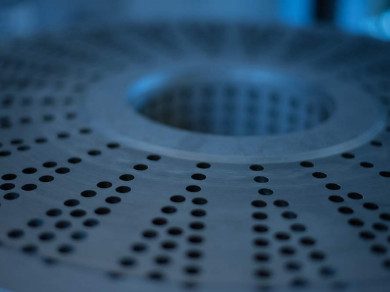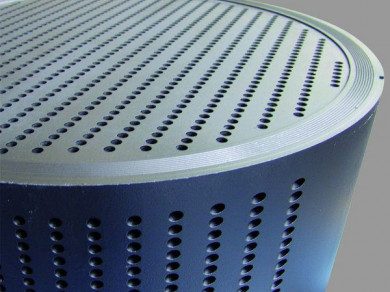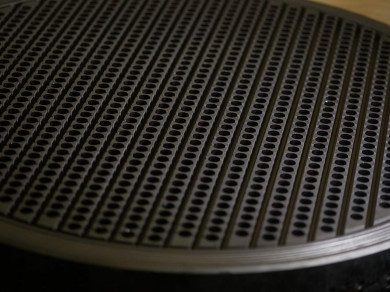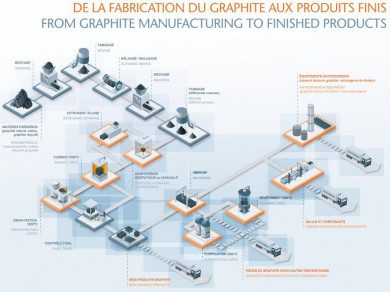ISOSTATIC GRAPHITE: GRAPHILOR®3
With over a century of experience in the manufacture of fine and ultra-fine structured graphite, Mersen has developed its own advanced isostatic graphite (grain size of 20 microns) called Graphilor®3.
Graphilor® 3 is the only impregnated graphite resulting from the combination between isostatic graphite and a specific resin. It has the highest mechanical properties authorized by TÜV and can withstand extreme temperatures. Mersen offers a range of Graphilor® 3, based on various impregnations (phenolic, carbon and PTFE) which ensure it is impervious, resistant to corrosion and temperature, and stable long-term.
3 products

Graphilor®3 XBS (phenolic resin)
Suitable for 80% of applications, available up to 220°C, excellent corrosion resistance.

Graphilor®3 XC (carbon resin)
Perfect for very high temperatures up to 430°C.

Graphilor®3 XTH (PTFE resin)
High corrosion resistance properties.
Graphilor®3 properties
- Excellent refractory qualities and mechanical properties
- Very good thermal conductivity and temperature resistance
- Non-contaminating
- Exceptional corrosion resistance
TEMPERATURE AND LONG-TERM STABILITY
- Highly cross-linked resin (BS)
- Resin treated at high temperature (C)
- PTFE resin (TH)
Synthetic graphite, the basis of Graphilor
The first graphitization patent was filed by two engineers working for Société Le Carbone in 1893.
Artificial graphite is manufactured from a mixture of graphite, pitch and other materials. When molding and firing graphite in an inert environment at 1,000°C, a hard, amorphous, intermediate form of carbon is obtained which does not conduct heat or electricity very well. Heating the carbon to around 3,000°C, without the presence of any air, purifies and crystallizes it into a mild, greasy form. This form of carbon conducts electricity and heat that can withstand chemical corrosion and very high temperatures. Components measuring up to half a cubic meter can be produced. This is artificial graphite or electrographite.
Contact USA
Sales & Engineering
Salem, VA 24153
(540) 389-7535
Contact USA
Sales & Engineering
Salem, VA 24153
(540) 389-7535








